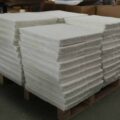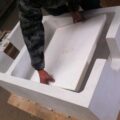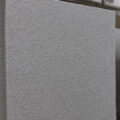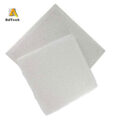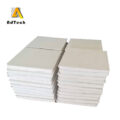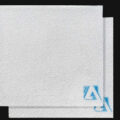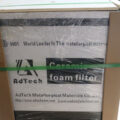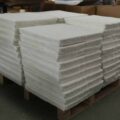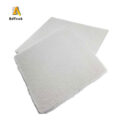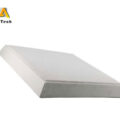The AdTech Alumina Filter Ceramic Foam For Precision Casting Filter has sufficient strength. The ceramic foam filter is relatively brittle and hard. It is easily broken and chipped when the strength is insufficient, which is not only unfavorable for storage and transportation. Once it falls into the aluminum during filtration The quality of the ingot will also be affected in the melt. The compressive strength of the ceramic foam filter is generally 0.6 MPa. The ceramic foam filter produced by our factory has never been disintegrated and chipped. In case there is a chipping phenomenon, because it does not wet with the aluminum liquid, it mostly floats on the liquid surface. As long as the oxide film of the aluminum liquid does not break, the debris will not be caught in the aluminum liquid.
Alumina filter ceramic foam should be washed with heat-resistant aluminum liquid. During the casting process, the high-temperature aluminum liquid suddenly contacts the surface of the ceramic foam filter and heats the ceramic foam filter within a few seconds. The heat of the aluminum liquid quickly raises the ceramic foam filter to near the temperature of the molten metal (about 700 ℃). The ceramic foam filter expands instantaneously upon heating, which requires that the ceramic foam filter should have a small coefficient of thermal expansion and not crack after being heated. Because the ceramic foam filter soaked in aluminum liquid must last for a certain period of time, it is not allowed to be washed down and soften deformation.
The chemical stability of the ceramic foam filter is high. The main component of the ceramic foam filter is Al2O3, which does not react with aluminum at high temperatures.
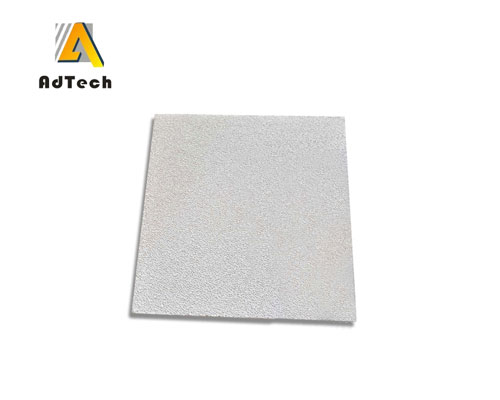
Conditions of Alumina Filter Ceramic Foam
(1) Melt temperature. In order to ensure that the aluminum melt has sufficient fluidity to pass through the ceramic foam filter, the temperature of the aluminum melt in the stationary furnace is usually increased by 3 ~ 5 ° C (than that of the non-filtered). The temperature at which the aluminum melt contacts the ceramic foam filter It should not be lower than 680 ~ 690 ℃. Increasing the temperature allows the aluminum melt to absorb heat from the ceramic foam filter, and still ensure sufficient fluidity to pass through the ceramic foam filter (especially the initial stage).
(2) Initial Pressure Head. The aluminum liquid is almost non-wetting to the ceramic foam filter. The wheat surface is convex in the fine holes. This is caused by the surface tension of the aluminum liquid. The direction of the force formed by this surface tension prevents the aluminum liquid from entering the ceramic foam filter. Internally, the liquid aluminum should have sufficient pressure head to balance with this surface tension, that is, the aluminum melt can pass through the ceramic foam filter. Ceramic foam filter does not need a high pressure head when filtering, the initial pressure head is 100 ~ 150 mm. And it can pass smoothly even in the filtration process even about 10 mm.


